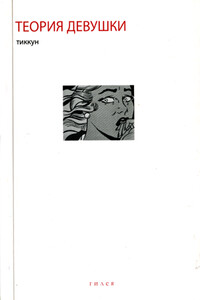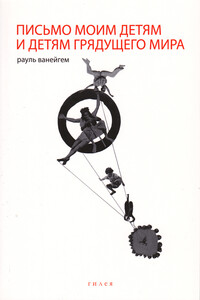Анархия и демократия - страница 11
>20Торо Г.Д. О гражданском неповиновении / Пер. З.Е. Александровой // Торо Г.Д. Высшие законы. М.: Республика, 2001. С. 268.
>21Гоббс Т. Левиафан / Пер. А. Гутермана // Гоббс Т. Сочинения в 2 т. Т. 2. М.: Мысль, 1991. С. 127.
>22Calhoun J.C. Disquisitions on Government and Selections from the Discourses. Indianapolis; N.Y.: Bobbs-Merrill Co, 1953. P. 29.
>23Spitz E. Majority Rule. P. 183; Steiner J. Decision-Making // Encyclopedia of Democratic Thought / Ed. by P.B. Clarke and J. Foweracker. L.; N.Y.: Routledge, 2001.
>24 United States v. Carolene Products Co. 304 U.S. 144, 152–53. N 4 (1938).
>25McConnell G. Private Power and American Democracy. P. 105, 109.
>26Burnheim J. Is Democracy Possible? Alternatives to Electoral Politics. Cambridge: Polity Press, 1985. P. 83; Waldron J. The Dignity of Legislation. Cambridge; N.Y.: Cambridge University Press, 1999. P. 132, 142–143; Buchanan J.M., Tullock G. Calculus of Consent. P. 125–127, 132–133; Dahl R.A. A Preface to Democratic Theory. Chicago: University of Chicago Press, 1956. P. 91–99; Dahl R.A. Dilemmas of Pluralist Democracy: Autonomy vs. Control. New Haven & L.: Yale University Press, 1982. P. 88–89.
>27Ролз Дж. Теория справедливости / Пер. В. Целищева. М.: URSS, 2010. С. 206.
>28Barber B. The Conquest of Politics: Liberal Philosophy in Democratic Times. Princeton: Princeton University Press, 1988. P. 79; Kendall W., Carey G.W. The “Intensity” Problem and Democratic Theory // American Political Science Review. 62 (1) (March 1968). P. 5–24.
>29Руссо Ж.-Ж. Об общественном договоре / Пер. А.Д. Хаютина и В.С. Алексеева-Попова // Руссо Ж.-Ж. Указ. соч. С. 231.
>30Steiner J. Decision-Making. P. 130.
>31Spitz E. Majority Rule. P. 3.
>32Mill J.S. Representative Government / / U tilitarianism, Liberty, and Representative Government. N.Y.: E.P. Dutton and Company; L.: J.M. Dent and Sons. 1951. P. 346–347 (рус. изд.: Милль Дж. С. Рассуждения о представительском правлении. Челябинск: Социум, 2006.); Barclay B. People Without Government: An Anthropology of Anarchism. L.: Kahn & Averill with Cienfuegos Press, 1982. P. 118; Linder W. Swiss Democracy. P. 110.
>33 «Потребность в таких вожаках очевидна уже потому, что под именем предводителей групп они встречаются в собраниях всех стран и являются настоящими властелинами этих собраний». См.: Лебон Г. Психология народов и масс. СПб.: Макет, 1995. С. 294.
>34Taylor P.J., Gudgin G., Johnston R.J. The Geography of Representation: A Review of Recent Findings // Electoral Laws and Their Political Consequences / Ed. by B. Grofman, A. Lijphart. N.Y.: Agathon Press, 1986. P. 183–184; McConnell G. Private Power and American Democracy. P. 92; Dahl R.A. Dilemmas of Pluralist Democracy. P. 97–99; Cain B.E. The Reapportionment Puzzle. Berkeley: University of California Press, 1984. P. 36–37.
>35Arrow K. Social Choice and Individual Values. N.Y.: John Wiley & Sons, 1963. P. 94–95; An Essay on the Application of Probability Theory to Plurality Decision-Making (1785) // Condorcet: Foundations of Social Choice and Political Theory / Tr. & ed. by I. McLean, F. Hewitt, F. Aldershot. Brookfi eld: Edward Elgar Publishing, 1994. P. 120–130. Некий преподобный Доджсон ввёл понятие «Ни один из вышеупомянутых» как вариант голосования (см.: A Method of Taking Votes on More Than Two Issues // The Political Pamphlets and Letters of Charles Lutwidge Dodgson and Related Pieces: A Mathematical Approach / Ed. by F.F. Abeles. N.Y.: Lewis Carroll Society of North America, 2001. P. 95). С тех пор Теореме Эрроу, «теоретическому обоснованию, что выборы могут обеспечить желаемые результаты, был нанесён удар, от которого она вряд ли сможет полностью отойти». См.: Keech W.R. Thinking About the Length and Renewability of Electoral Terms // Electoral Laws and Their Political Consequences. P. 104.
>36Riker W.H., Weingast B.R. Constitutional Regulation of Legislative Choice: The Political Consequences of Judicial Deference to Legislatures // Working Papers in Political Science. N P—86–11. Stanford: Hoover Institution, 1986. P. 13–18 (реальные примеры бесконечного циклического большинства);








